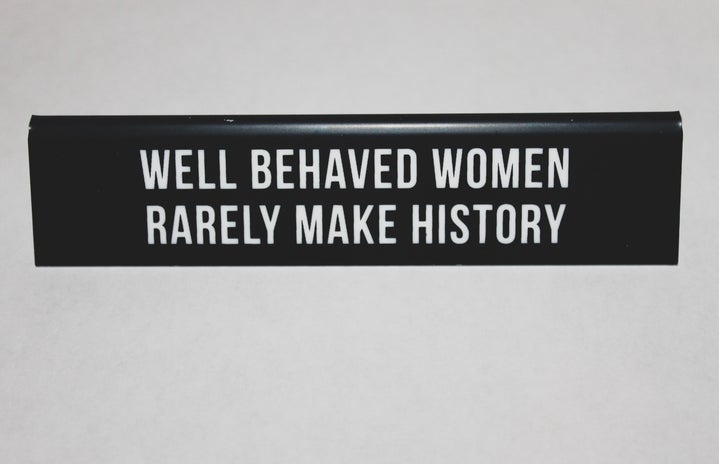When the Passport Office released the new UK passport this month, I felt momentarily optimistic that after the campaign to represent a female on newly issued bank notes, women might just make their way into this crucial national document. Boy, how wrong I was.
Don’t get me wrong, the 34 pages are beautiful; enhanced holograms and images of flowers abound. All very lovely. On every page, Shakespeare presides like a kind of deity overlooking the display of British creativity in the last half millennia. Yes, we all know Shakespeare is brilliant – but do we really need to be reminded of him on every page?
The far bigger issue is, on these 34 pages, only two women are included. First up is Elisabeth Scott, architect of the Royal Shakespeare Theatre in Stratford-upon-Avon, who appears in portrait form. And second, is the mathematician Ada Lovelace, who has to share a page with Charles Babbage, who she worked with to create the Analytical Engine.
(Photo credit: The Metro)
My reaction, which I imagine may be similar to yours, was: what is this madness? Female politicians publicly denounced the passport, citing it as a missed opportunity for female representation. Stella Creasy, the Labour MP for Walthamstow who was prominent in the campaign to replace Charles Darwin with Jane Austen on the £10 note, tweeted: “So tired of this shizzle – home office could only find 2 UK women 2 celebrate in 500 years of history.” Similarly, the Islington South Labour MP Emily Thornberry, a former shadow attorney general, tweeted: “here we go again – new UK passport has 7 men featured and just 2 women” and described the whole affair as “quite exasperating.” Preach it sisters. What is also so disheartening is the sense of the politicians’ exasperation and fatigue; it’s as if women in the public sphere, past and present, are fighting against a brick wall of men who are more than happy to sit in their exalted state.
I consider all the women we could have included on the passport; what about Aphra Behn, the female often cited as the first English novelist? Charlotte Bronte? Mary Wollstonecraft? Or Virginia Woolf? While I accept my inherent bias as a literature student, I feel these figures did more for the creative life of Britain than John Harrison, the inventor of the marine clock, who dominates a whole page on the new passport. And why couldn’t more modern figures be featured? It would have been representative of how society has become slightly more accepting of women in the creative sphere; alongside Shakespeare was there not room for Carol Ann Duffy, J.K. Rowling or Tracey Emin?
(Photo credit: Lifehack)
And really, was this not an unnecessary blunder? A conscious effort should have been made to ensure 50% of the figures were female. It shouldn’t be that difficult, considering half the people on this planet are women. Some could argue that the passport reflects a history in which, because of sexism, women found it harder to find public success, so it is only right the new passport should reflect this. But this logic, frankly, is stupid.
A young girl looking at her passport will see a gallery of men and that’s what will be imprinted on her mind. Hardly empowering. If there was a message embossed in gold on the front of the passport stating that “This document is making a feminist statement about historic discrimination of women” then this logic might be slightly more palatable. And this is highly unlikely, but one can dream. But as it stands, the passport seems to provide a blatant example of misogyny that still plagues us in 2015. Some may suggest that there are bigger fights to engage in for the advancement of women, but I strongly believe that it is these small everyday things such as bank notes and passports that help to make discrimination against the female sex a chronic problem in our society.
We all know that old saying: “Behind every successful man is a woman.” I feel the phrase perfectly sums up this passport. Behind each exalted man depicted in the new passport, we could find galleries of women, wives, aunts and daughters, who supported these men, cooked, cleaned and served them, enabling them to persevere in their creative pursuits. But they are hidden behind these men. Metaphorically, that is exactly where they are on the pages: concealed and stamped upon. You can almost imagine that if you peeled off the top layer of each page a woman would be there behind the man. And that is how I will think of it each time I look at my new passport. That will have to be consolation for now. But really, equal representation of women in the new passport should not have been a small optimistic hope, but an expectation.
(Photo credit: Gallery Hero)


